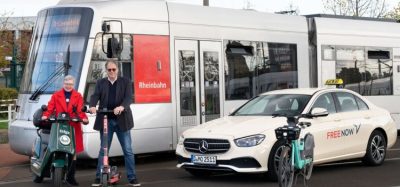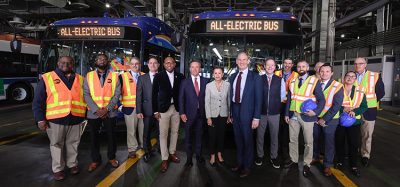TIER Mobility expands partnership with Google Maps
- Like
- Digg
- Del
- Tumblr
- VKontakte
- Buffer
- Love This
- Odnoklassniki
- Meneame
- Blogger
- Amazon
- Yahoo Mail
- Gmail
- AOL
- Newsvine
- HackerNews
- Evernote
- MySpace
- Mail.ru
- Viadeo
- Line
- Comments
- Yummly
- SMS
- Viber
- Telegram
- Subscribe
- Skype
- Facebook Messenger
- Kakao
- LiveJournal
- Yammer
- Edgar
- Fintel
- Mix
- Instapaper
- Copy Link
Posted: 28 September 2022 | Intelligent Transport | No comments yet
As part of an expansion of their partnership, TIER’s micro-mobility vehicles are now available through Google Maps in over 200 more cities worldwide, including locations in Israel and Ireland for the first time.


Credit: TIER Mobility
TIER Mobility has announced that its vehicles, including e-scooters and e-bikes, are now available as a transport option through Google Maps in more than 200 cities, meaning that even more riders will be able to easily access green transport options.
The collaboration between the micro-mobility provider and Google means that riders will be able to locate nearby TIER vehicles when searching for directions on the Google Maps app. In addition, they will also have access to key information, such as the walking distance from the vehicle, its charging status, a cost estimate for their journey and an anticipated destination arrival time.
Having already successfully partnered with Google Maps in numerous cities across Europe, including in Germany, France, Austria, Switzerland, Norway, Sweden, Finland, Italy, The Netherlands, Belgium, Poland, Hungary and the UK, TIER is now expanding its Google Maps offer to more than 200 cities, including locations in Israel and Ireland for the first time.
TIER reveals new data and partnership to increase micro-mobility ridership
Under the tab for cycling directions, users can find the ‘TIER’ option alongside ‘your bike’. By clicking on the TIER button, Google Maps shows the nearest available TIER e-scooters and e-bikes. In order to start the ride, users are then re-directed to the TIER app.
Alexander Sprey, Senior Manager Market Development & Partner Strategy at TIER Mobility, said: “For many people the first hurdle to adopting micro-mobility is discovering how easily it can fit into their daily lives. With the expansion of our Google Maps partnership we can support more people around the world to easily plan their routes, access our vehicles, and reduce their carbon footprint by changing the way they move around.”
If you liked this, you may also be interested in:
▶ TIER and RAKTA sign agreement to operate micro-mobility services in the Emirate of Ras Al Khaimah
▶ Neuron Mobility launches integration with Google Maps in Canada
Related topics
Accessibility, Air Quality, Journey Planning, Mobility Services, Passenger Experience, Sustainable Urban Transport
Related modes
Bikes & Scooters
Related countries
Belgium, Finland, France, Germany, Norway, The Netherlands, United Kingdom
Related organisations
Google Maps, TIER, TIER Mobility
Related people
Alexander Sprey







